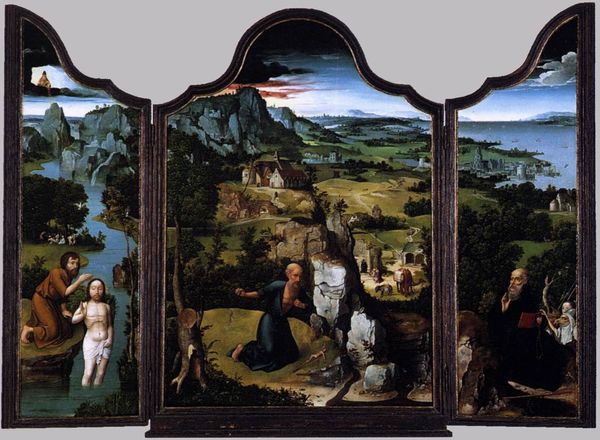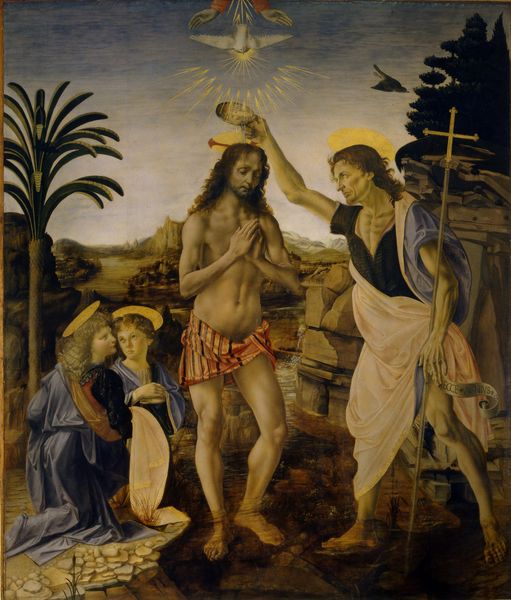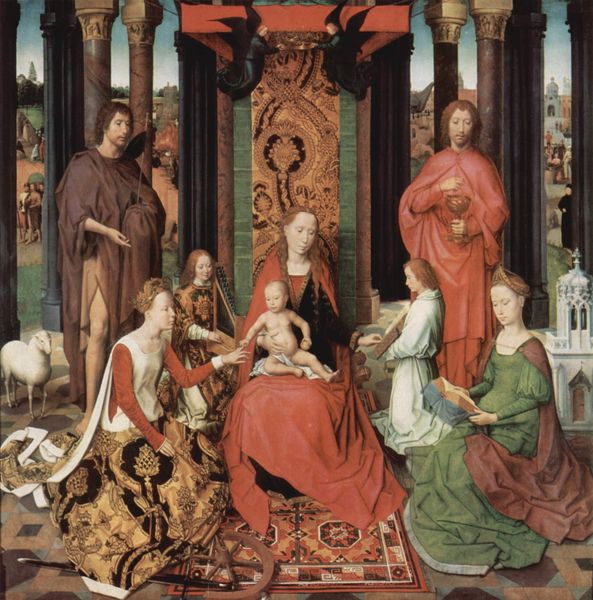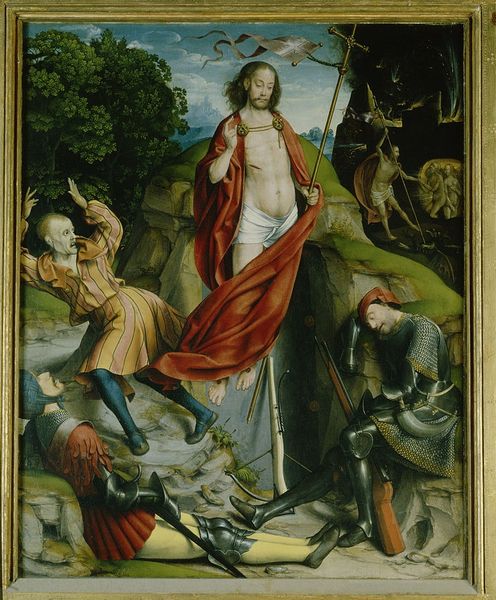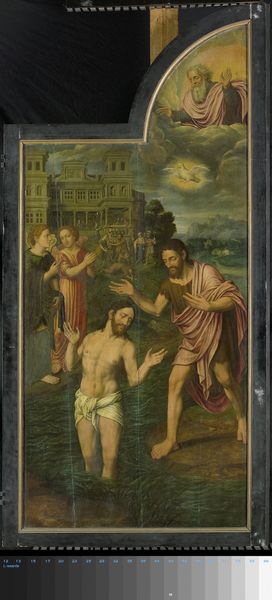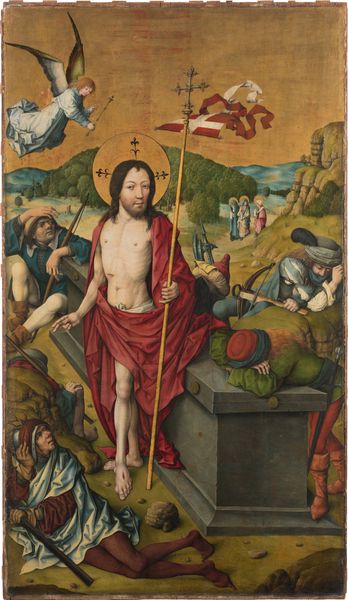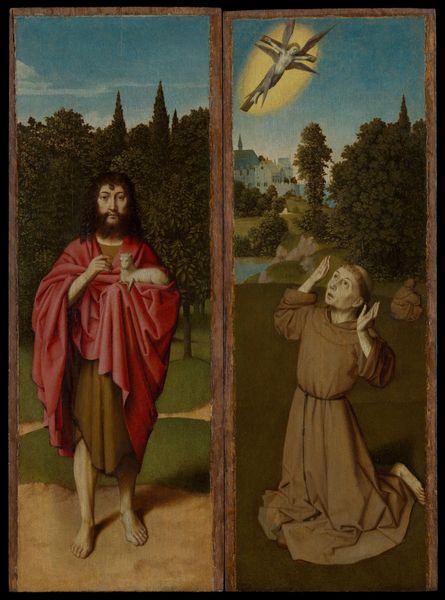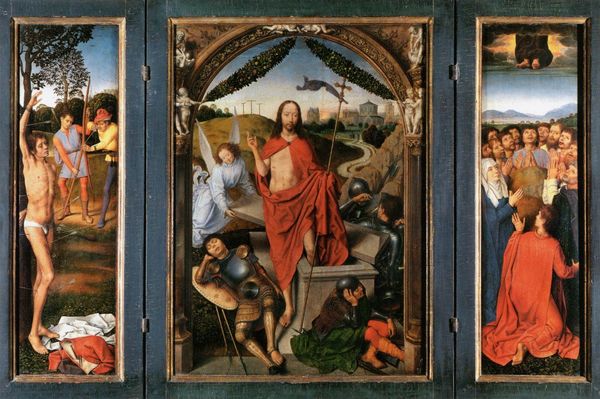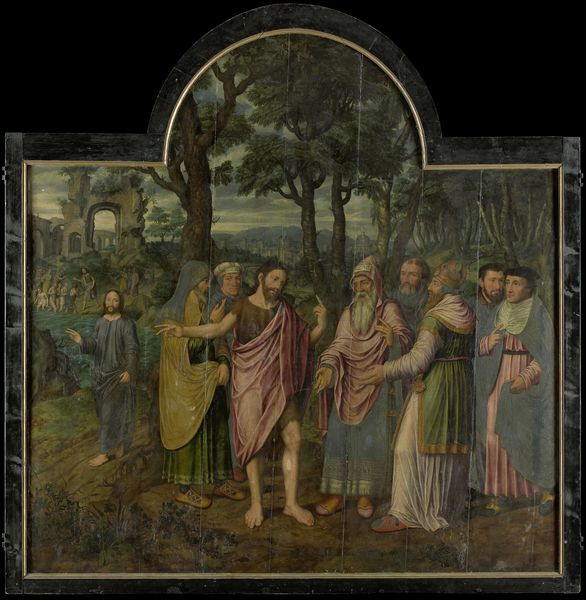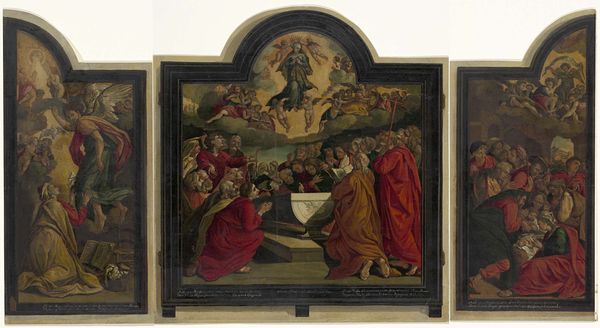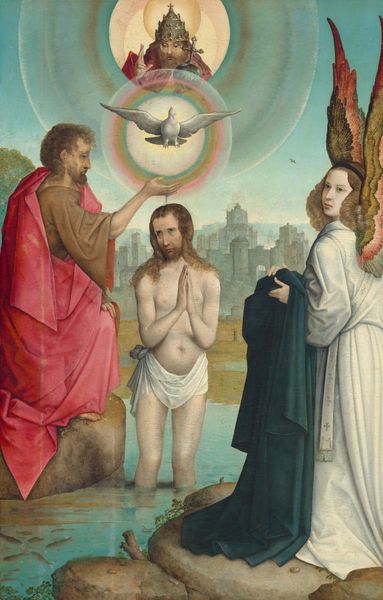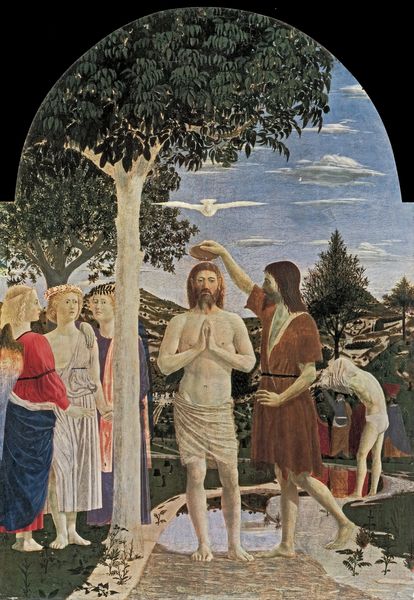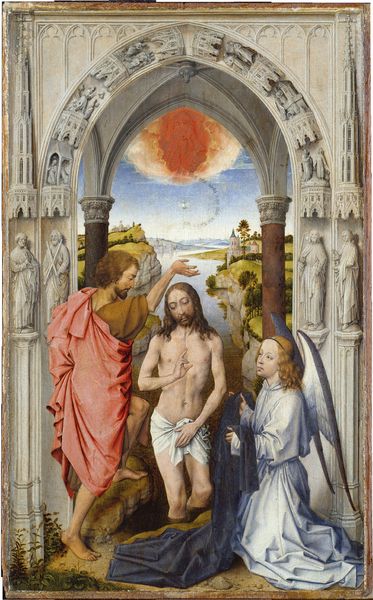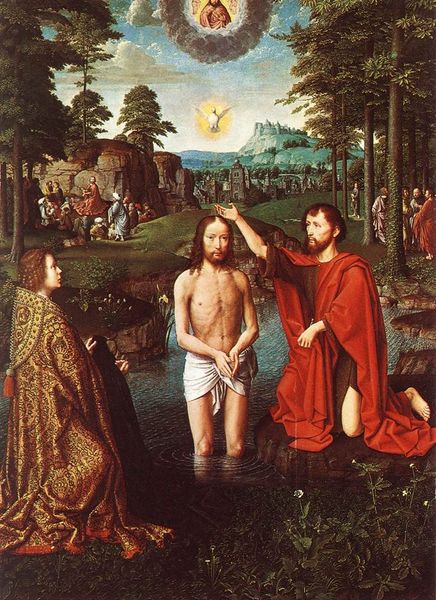
painting, oil-paint
#
painting
#
oil-paint
#
landscape
#
figuration
#
oil painting
#
jesus-christ
#
underpainting
#
christianity
#
painting painterly
#
history-painting
#
early-renaissance
#
christ
Dimensions: 129.7 x 96.6 cm
Copyright: Public domain
Editor: So, this is Gerard David’s "Triptych of Jan Des Trompes," painted around 1505. It's oil on wood. There's something so still and reverent about it, especially the center panel. What do you see when you look at it? Curator: A world caught between two breaths. David gives us this crystalline depiction of Christ's baptism, yes, but there's a hum of something more…almost primordial, in the misty Flemish landscape stretching out behind. Did you notice how the light seems to pool in the fabric folds? Editor: Yes, the light is incredible. What do you make of the two side panels, with what looks like the patron family in them? They feel very different in mood. Curator: Exactly! And doesn’t that say something about the nature of belief itself? Jan Des Trompes and his kin, captured in this quieter, more human space, anchored to the sacred scene by prayer and witness…they’re not *in* the myth, they're simply changed *by* it. A question arises: are we watching a transaction, or an act of transformative gazing? Editor: That's a fascinating way to put it! I hadn't considered that. The side panels feel so separate, but you're right, their gaze connects them. Curator: See how their presence transforms the *entire* triptych into a kind of personal chapel? Art isn't simply about looking – it is a dynamic field where looking can birth something utterly new. It’s where water turns, well, not quite to wine, but to *wonder*, perhaps? Editor: That’s so beautifully put. I’ll definitely be looking at triptychs in a new light from now on. Curator: Indeed, and remember, my friend, that looking is itself a form of creation.
Comments
No comments
Be the first to comment and join the conversation on the ultimate creative platform.
